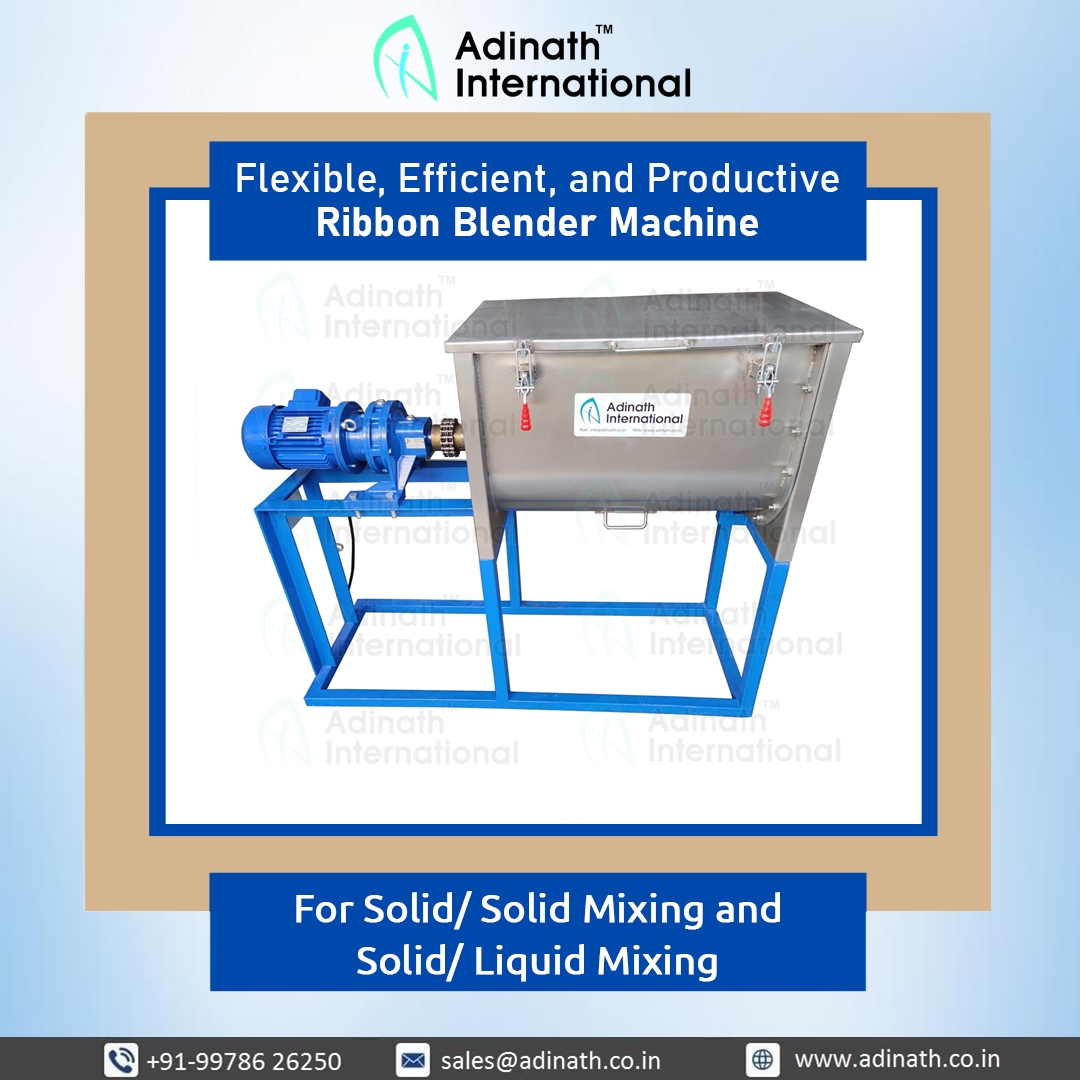In several industries, ribbon blender have become one of the most effective and adaptable mixing options. They are the perfect option for organizations that need to consistently and uniformly mix various ingredients thanks to their distinctive design and operating advantages.
A ribbon blender, often called a ribbon mixer, is a specialized mixing device that uses a set of helical agitators to mix ingredients. These agitators are frequently shaped like ribbons. The ribbons’ opposing rotational axes produce a fluidizing and cascade motion that makes sure the mixture is well blended. The ribbon blender can handle a variety of materials, including powders, pastes, and even viscous substances, thanks to its design principle.
Ribbon Blender Flexibility
The adaptability of a ribbon mixer is one of its main benefits. These mixers can effectively combine a wide variety of components, such as dry powders, granules, pastes, and more. A ribbon blender can accomplish the task with accuracy and consistency, whether it’s blending medicinal powders, combining chemicals, or mixing spices in the food sector.
Additionally, ribbon blenders are widely utilized in a variety of sectors, including the food processing, chemical, pharmaceutical, and cosmetic industries. They are present in several manufacturing facilities, including bakeries, confectioneries, nutraceutical plants, and others. Their adaptability to various capacities, building materials, and feature customization to meet particular industrial requirements is the source of their versatility.

Use of a Ribbon Blender: Advantages
Efficient and consistent blending
The ability of a ribbon blender to produce effective and consistent blending outcomes is its main benefit. All components are thoroughly mixed thanks to the constant and fluid-like motion produced by the revolving ribbon agitators. As a result, there is no chance of ingredient separation or uneven distribution, leading to consistently high-quality products.
MONEY AND TIME SAVINGS
Ribbon blenders are created to simplify the blending process, saving businesses a lot of time and money. Higher production rates are possible thanks to the effective blending action, which cuts down on mixing time. Additionally, uniform mixing guarantees that each batch is homogeneous, preventing the need for waste or additional work as a result of insufficient mixing.
CAREFUL MANAGEMENT OF SENSITIVE MATERIALS
When mixing some components, such as delicate particles or compounds that are sensitive to heat, special care must be taken. In this aspect, ribbon blenders excel because their delicate blending action reduces product degradation and maintains the integrity of delicate components. This is especially important in sectors like the pharmaceutical industry, where it’s critical to maintain the potency and effectiveness of active compounds.
EASY TO OPERATE AND MAINTAIN
The simplicity of use and maintenance of ribbon blenders is another advantage. These mixers have an easy-to-use layout and controls, so even operators with little experience can use them. In addition, normal maintenance jobs like cleaning and inspections are not too difficult. The agitators and bearings need to be serviced and lubricated frequently to work at their best and last as long as possible.
CONFIGURATIVE OPTIONS
Customization options for ribbon blenders are available to fulfill various blending requirements. Based on their needs for production, companies can select the blender’s size and capacity. Depending on the type of substances being mixed, they can also choose the building material, such as carbon steel or stainless steel. The functioning of the blender can also be improved by adding other features like heating or cooling jackets, vacuum capabilities, and unique discharge systems.

The uses of ribbon blender
Ribbon blenders are used in a variety of industries thanks to their adaptability and effectiveness. Here are a few instances:
INDUSTRY OF FOOD
Ribbon blenders are frequently used in the food business to combine dry materials including spices, powders, and seasonings. They make sure that blending is constant, which is important for producing the correct taste profiles and level of product quality. Additionally, ribbon blenders are used to make sauces, dressings, confections, and baked foods.
industry of pharmaceuticals
When preparing pharmaceuticals, pharmaceutical companies use ribbon blenders to combine powders, granules, and other materials. Ribbon blenders’ homogeneous mixing promotes consistent distribution of active pharmaceutical ingredients (APIs) and appropriate dose. Excipients, inert compounds employed as fillers or binders in medicinal formulations, can also be blended using these mixers.
Industrial Chemical
In the chemical industry, ribbon blenders are essential for blending different chemicals, pigments, dyes, and additives. Ribbon blenders’ consistent blending assures consistent product quality and prevents the possibility of ingredient segregation or uneven dispersion. These mixers are used in the manufacturing of fertilizers, specialty chemicals, paints, and coatings.


